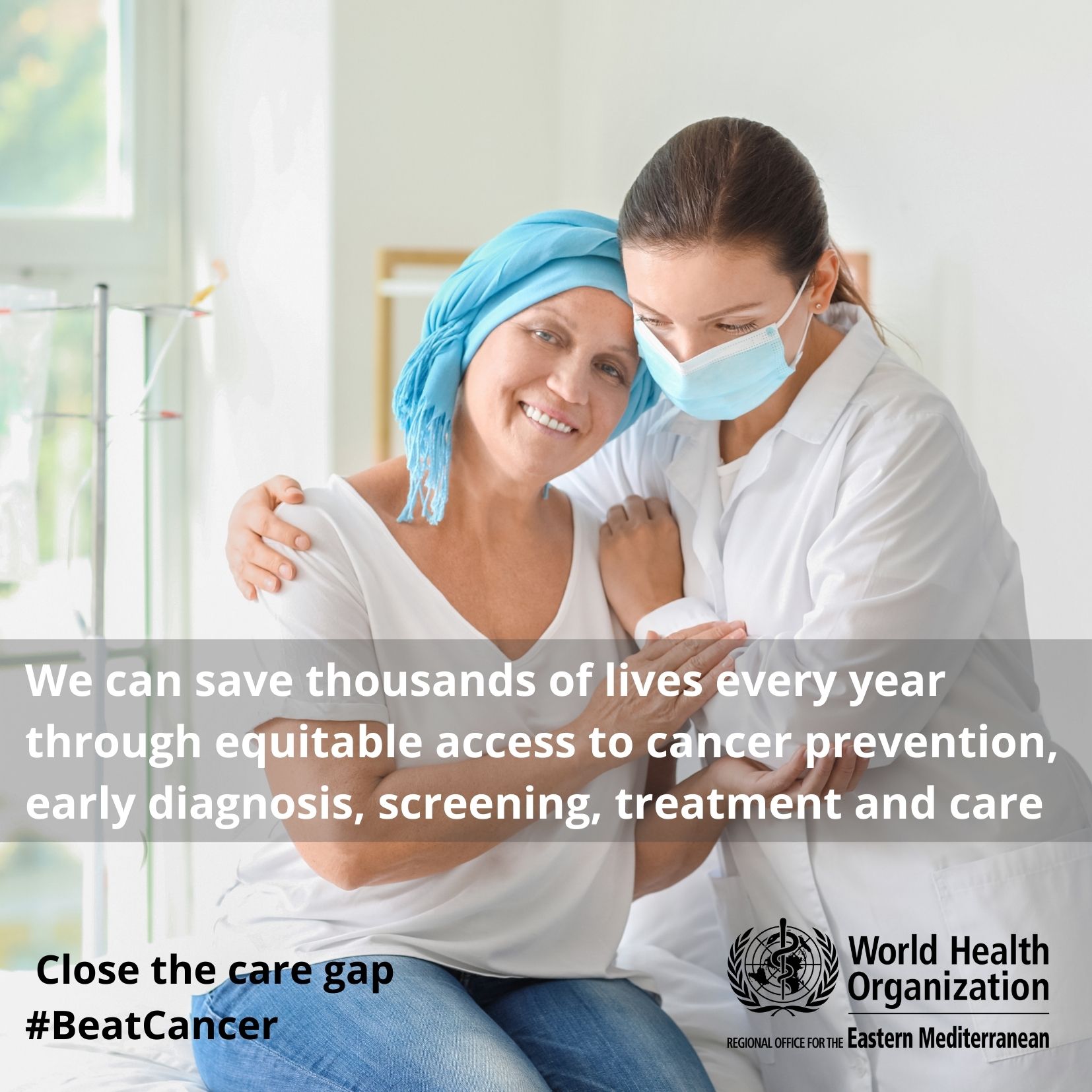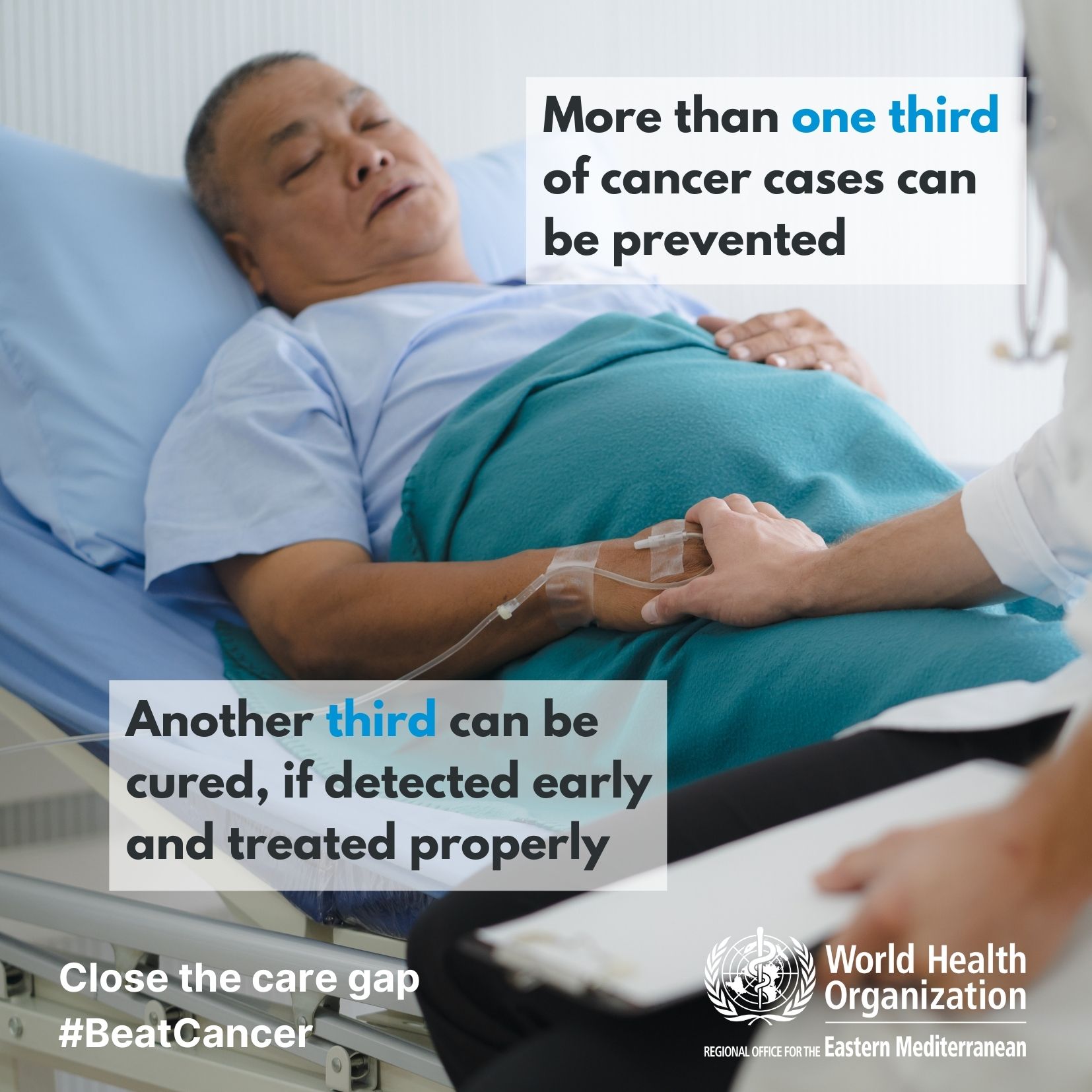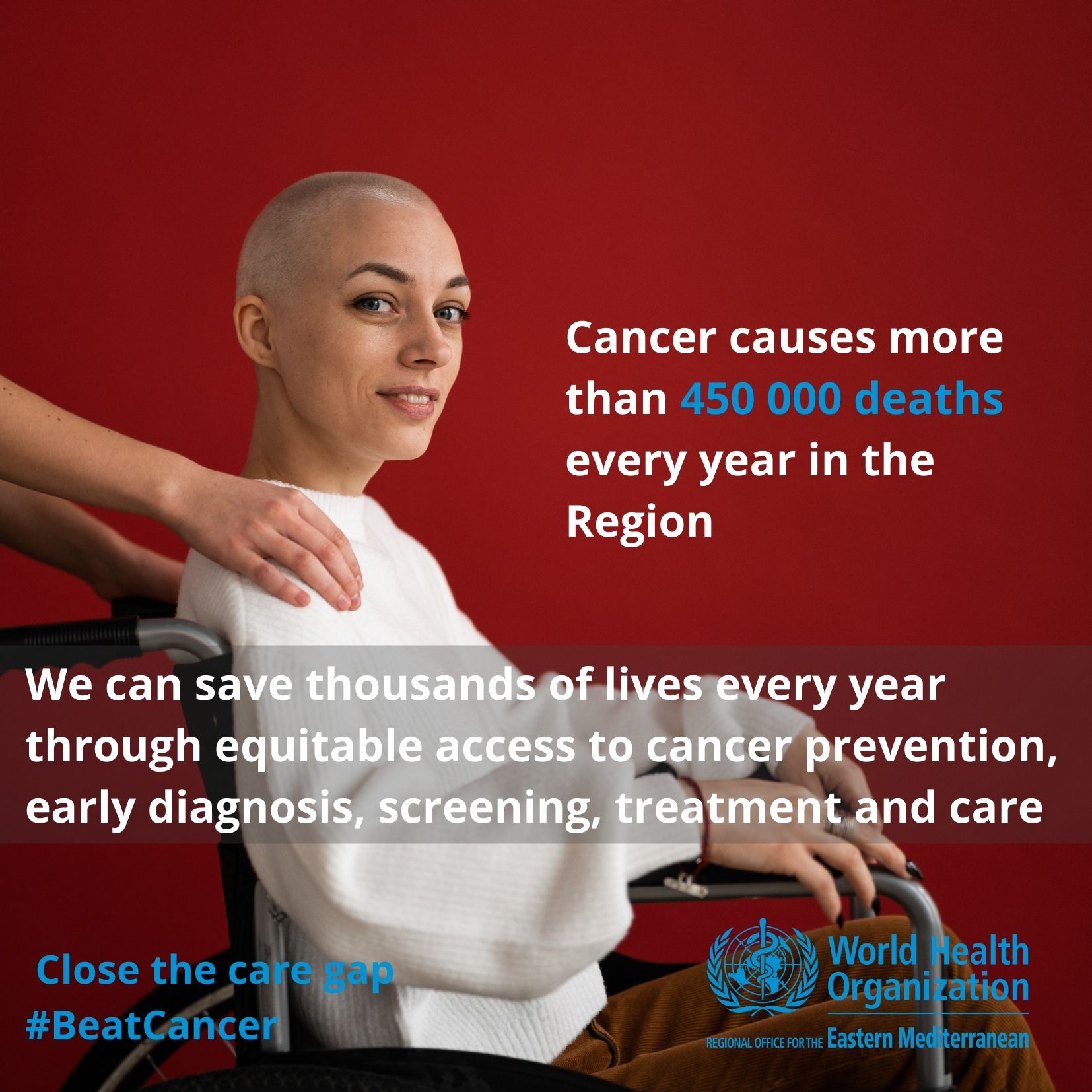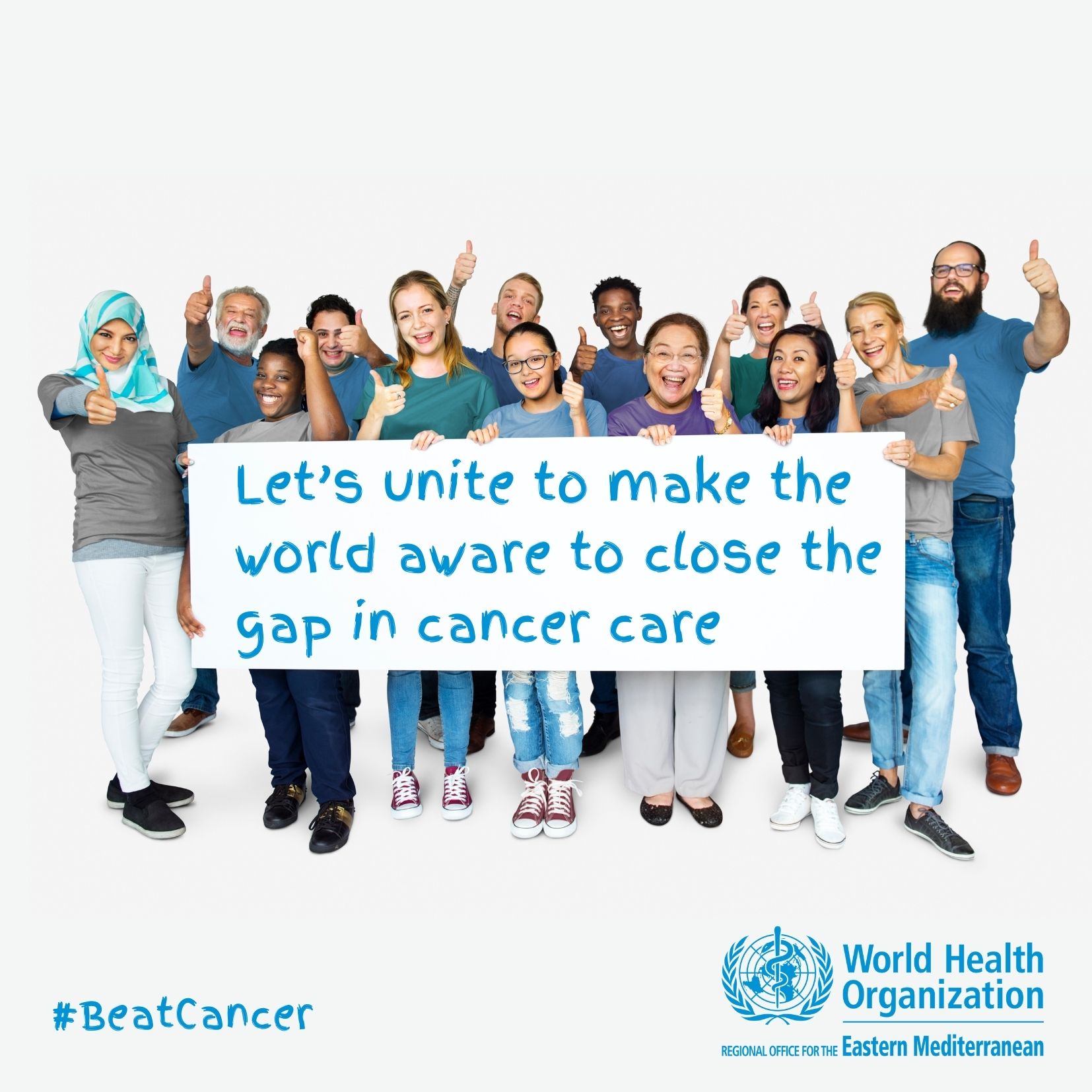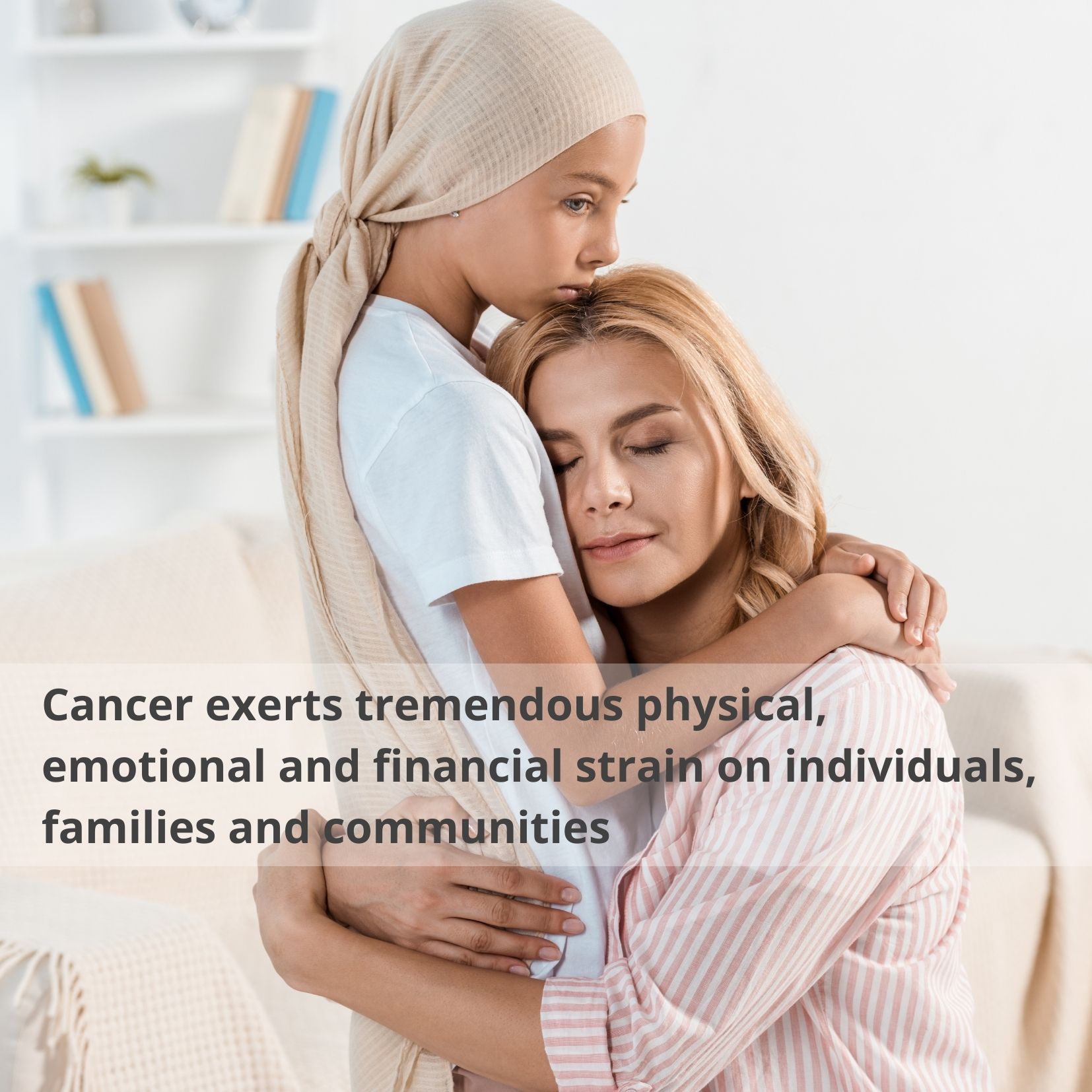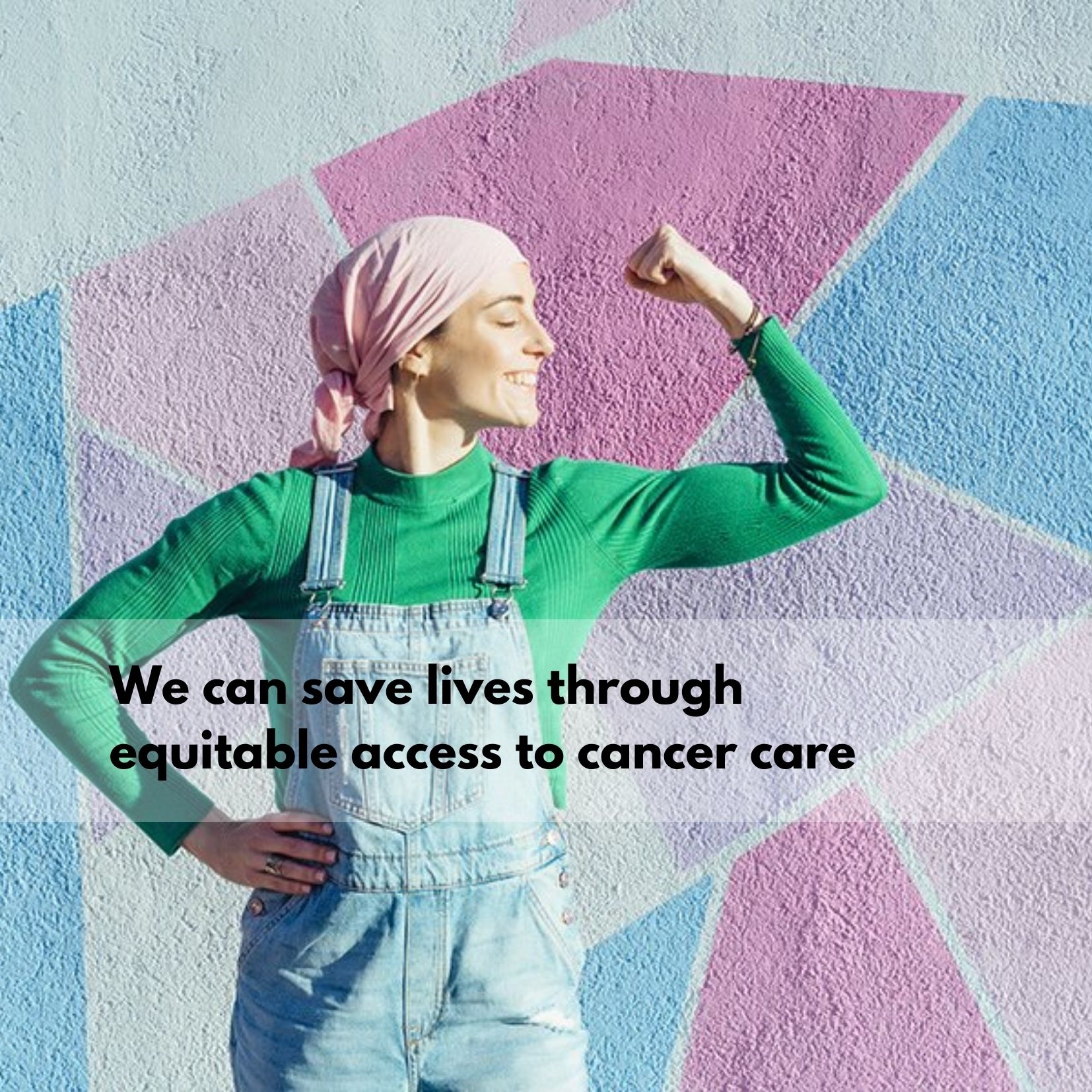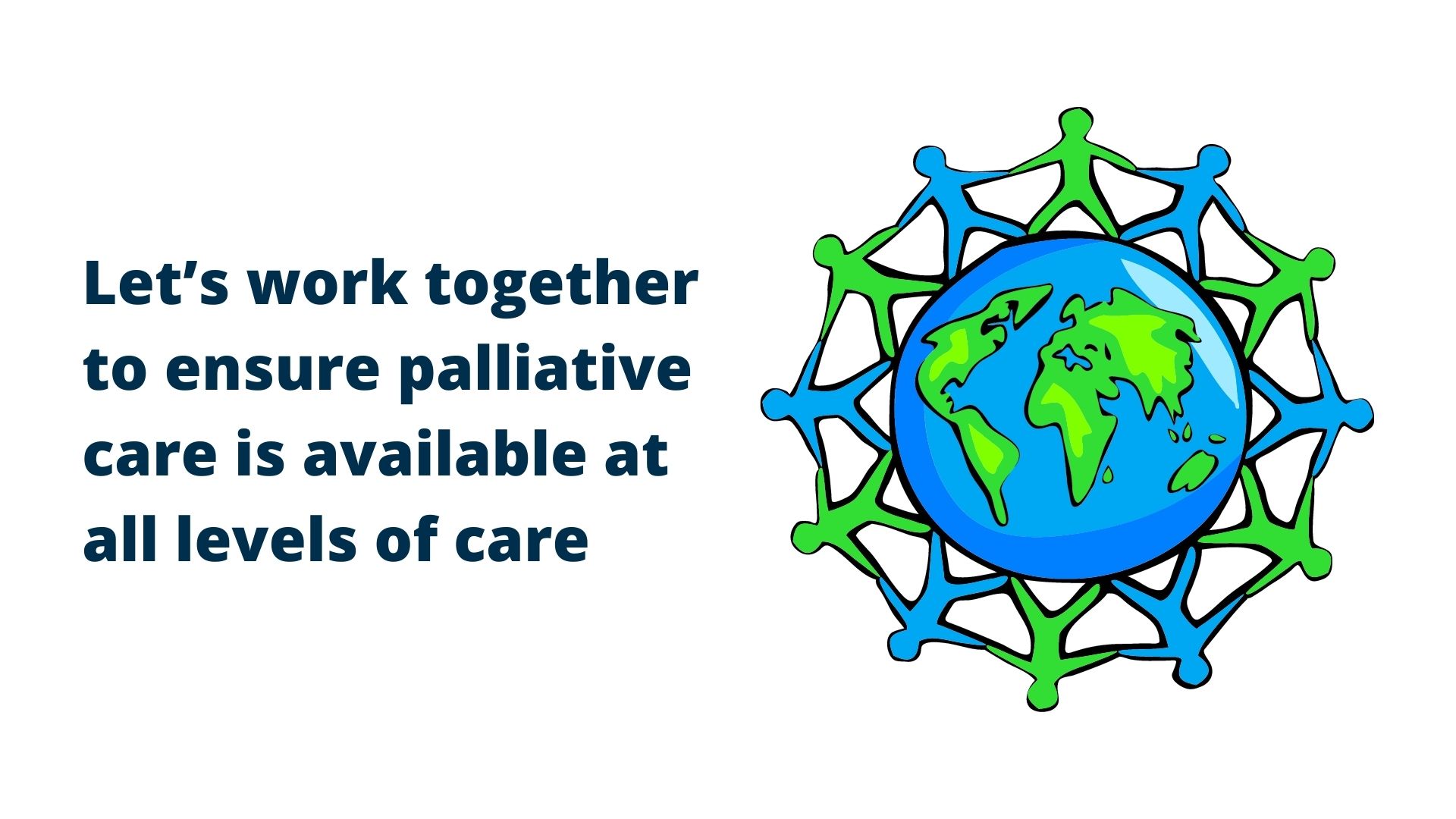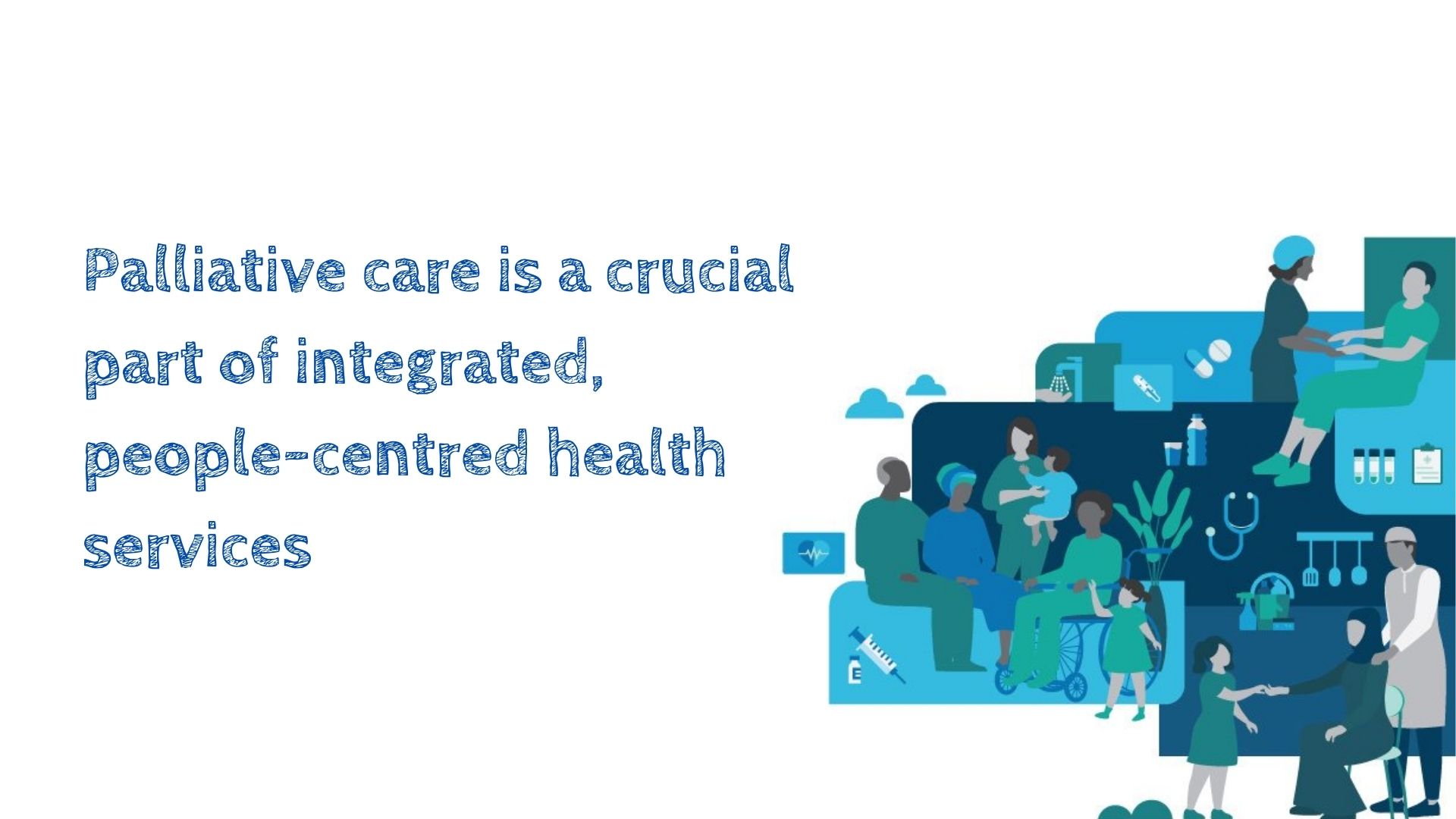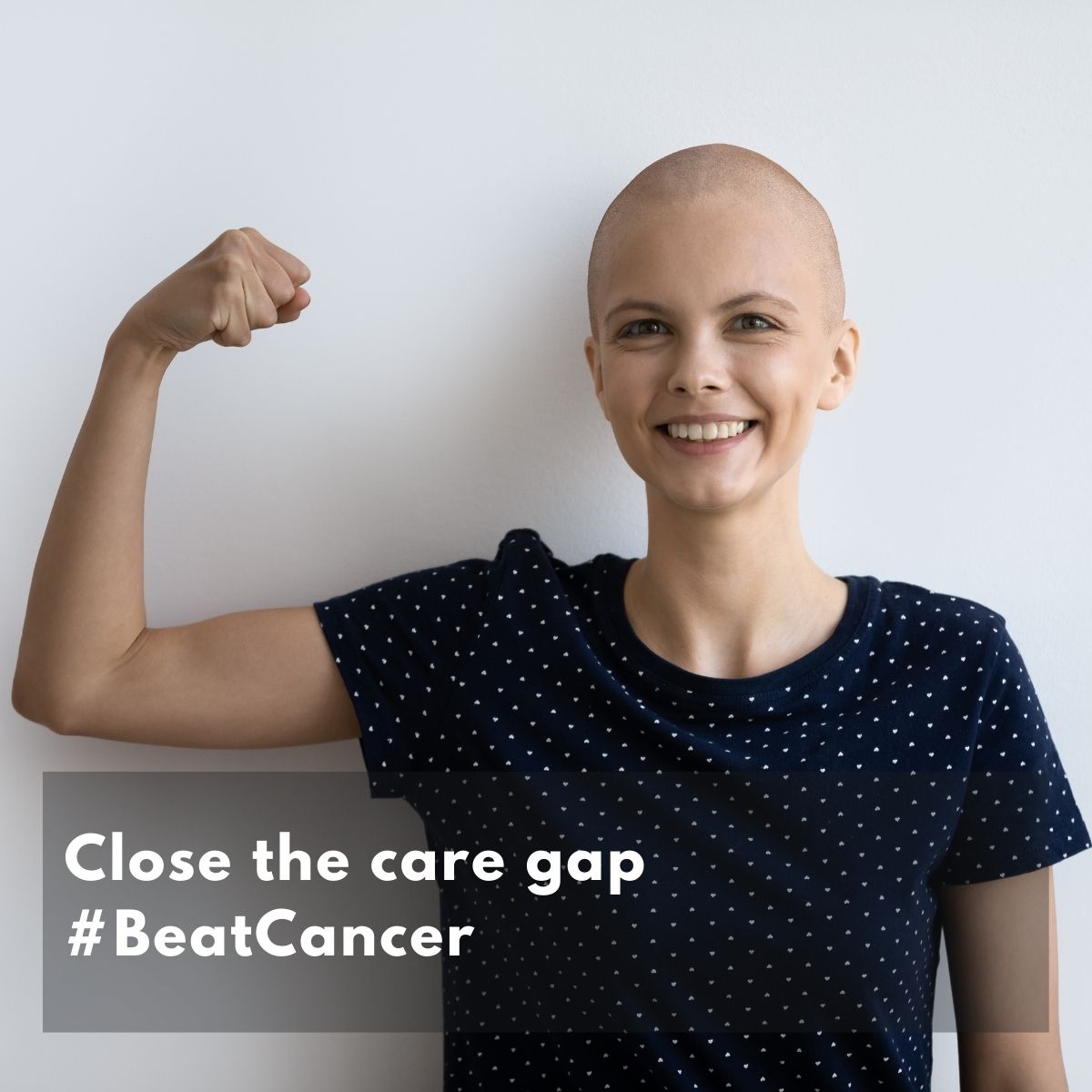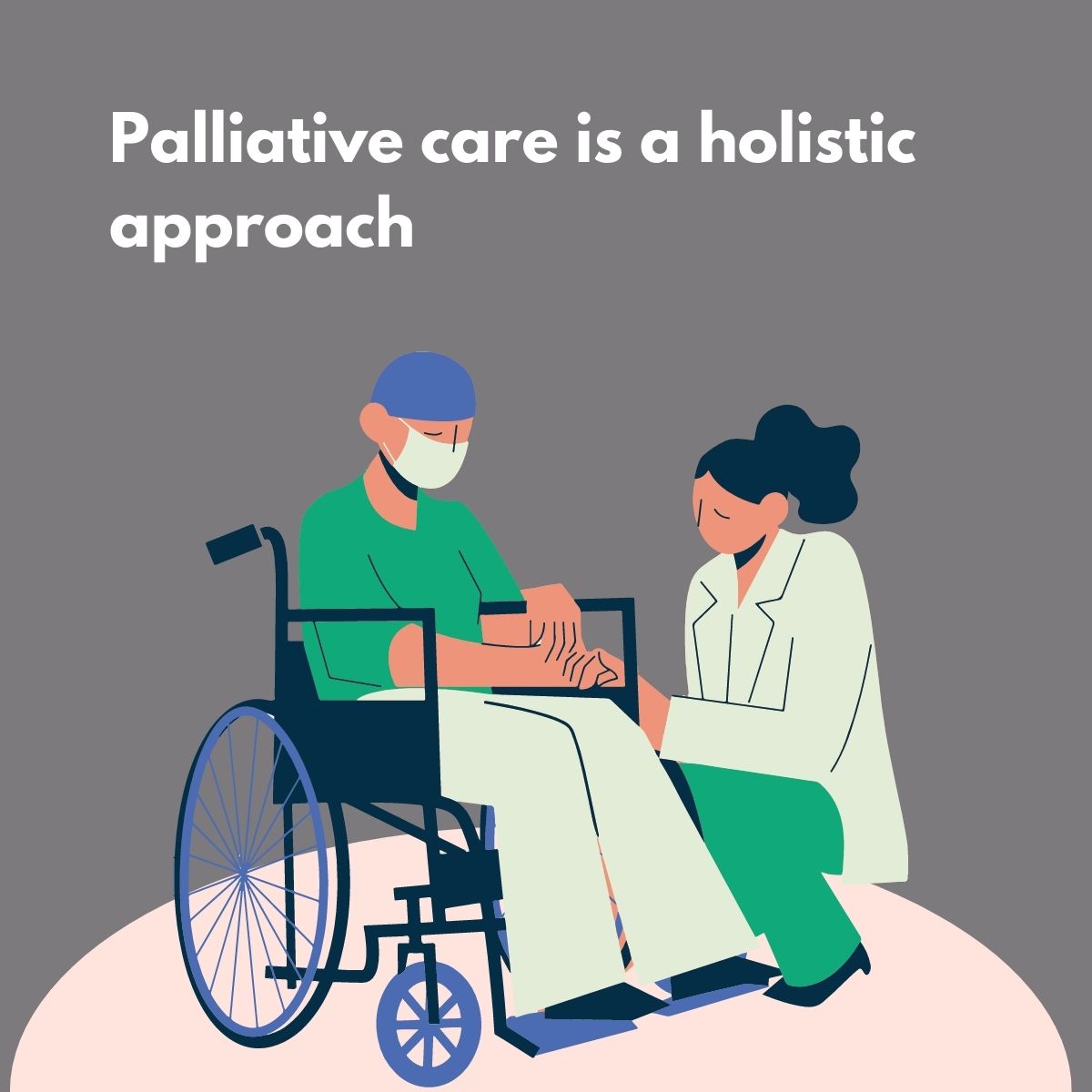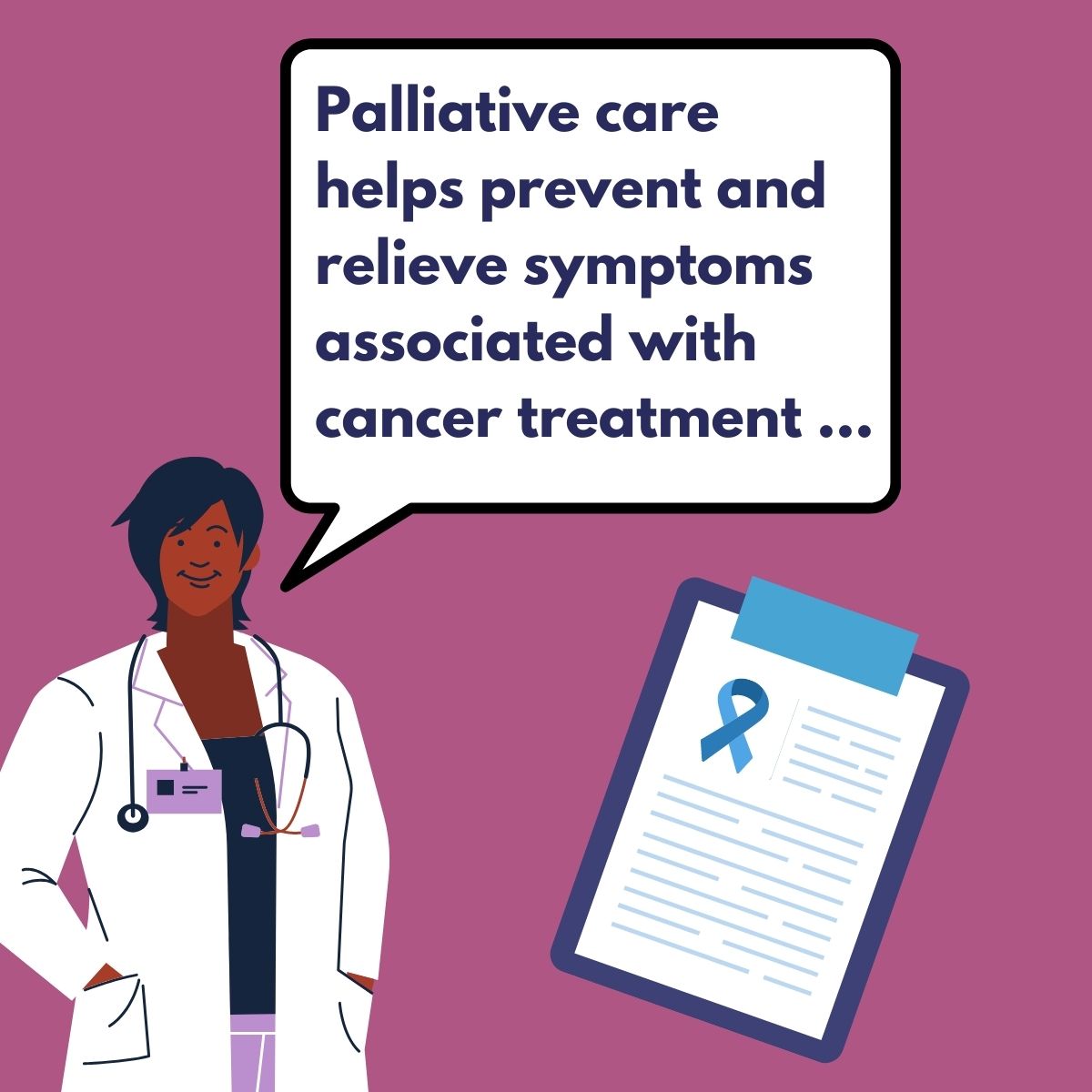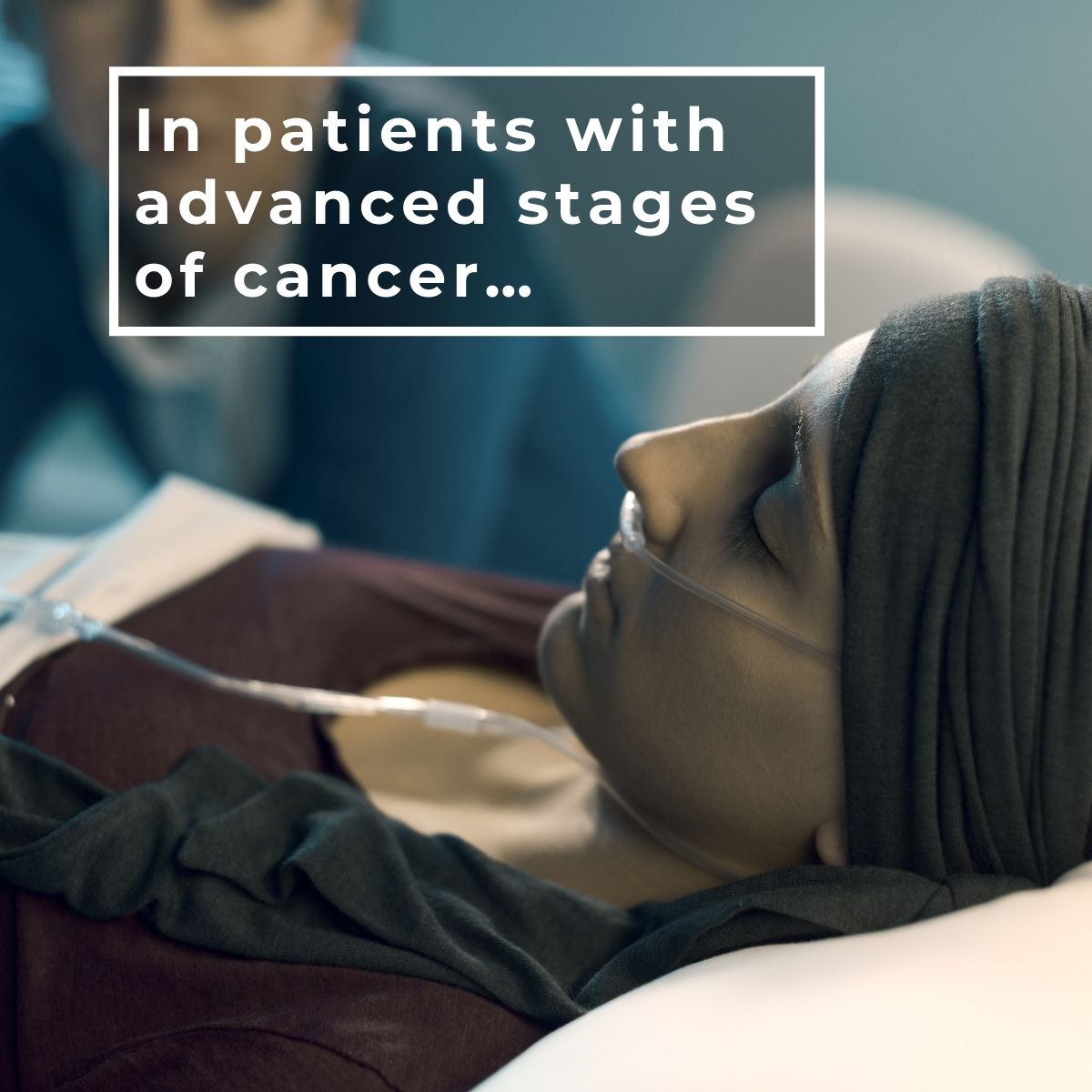Close the care gap

Cancer causes almost 459 000 deaths every year in the Eastern Mediterranean Region. Over the past five years, there were around 1.6 million cancer cases in the Region, making it a continuous burden that exerts tremendous physical, emotional and financial strain on individuals, families and communities. Almost 734 000 individuals are diagnosed with cancer every year and in 2040 it is predicted that the number of people being diagnosed will be about 50% higher.
World Cancer Day aims to promote awareness on cancer as a public health issue and to strengthen actions towards improving access to quality care, screening, early detection, treatment and palliative care. This year’s theme is “close the care gap” which is about understanding the inequities in cancer care and taking actions to make the necessary progress to address them.
We are observing World Cancer Day at a time when the world continues to live through the COVID-19 pandemic, where people living with cancer are at risk of getting severe symptoms. People living with cancer often develop COVID-19 symptoms more quickly, and they may suffer complications and require admission to an intensive care unit (ICU) if they do not seek immediate medical care. Unfortunately, the COVID-19 pandemic continues to cause significant cancer care disruptions, impacting patient access and lives. Moving forward, we have the opportunity to put the lessons being learned during this pandemic to good use in order to step up action to address disruptions and inequities in cancer prevention, care and control.
Regional framework for action on cancer prevention and control
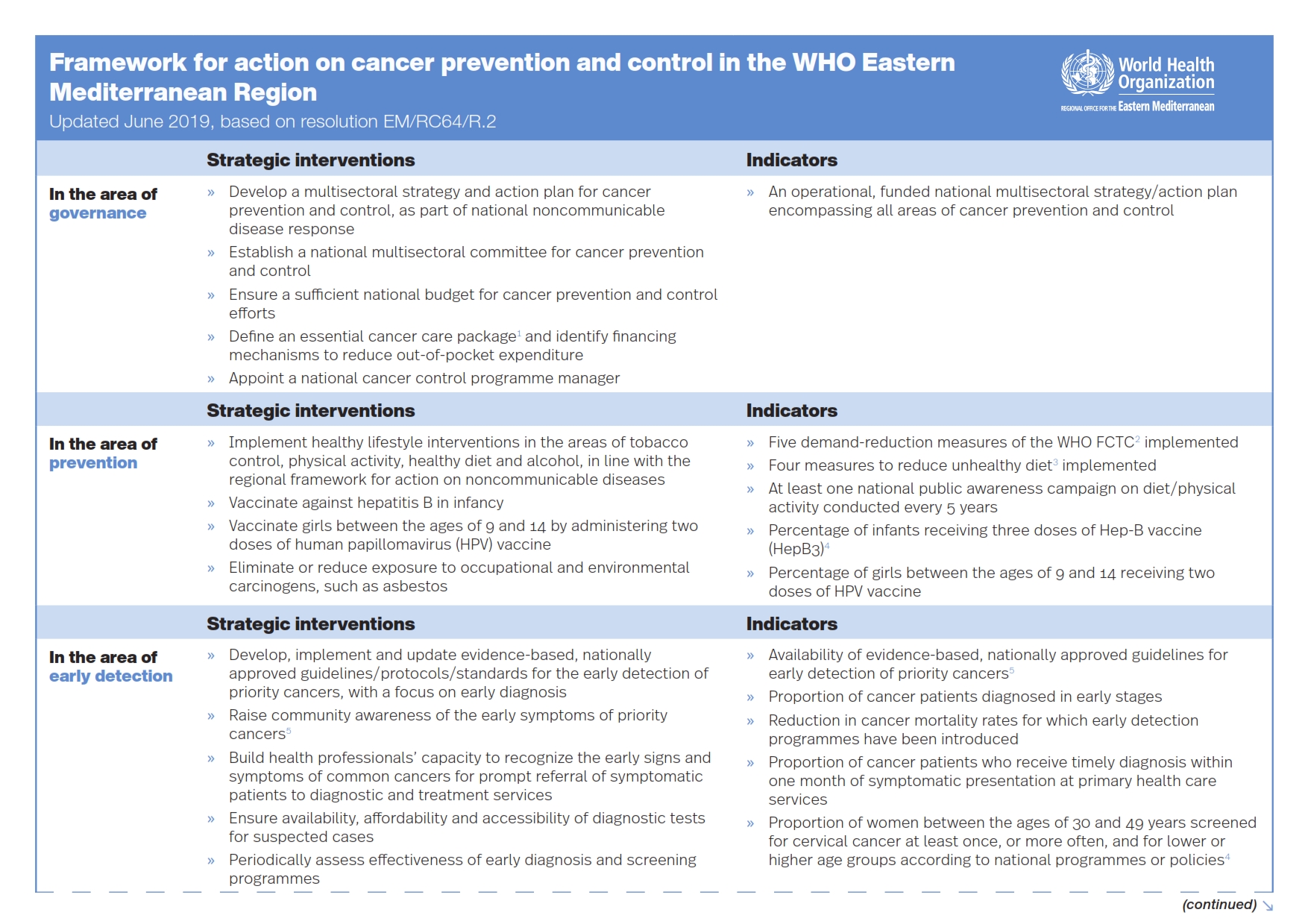
Cancer is the second leading cause of death worldwide, representing nearly 1 in 6 deaths globally. In WHO’s Eastern Mediterranean Region, most cases of cancer are diagnosed at a late stage when treatments are less effective which results in poorer outcomes for patients. Modelled estimates indicate that by 2030 the Region will have the highest increase in cancer burden among all six WHO regions. In spite of positive developments in some countries of the Region, cancer prevention and control in countries of the Region remained at an early stage of development, with limited strategic direction.
The regional framework for action on cancer prevention and control was developed and endorsed in 2017 (and updated in 2018) to scale up guidance to countries and support implementation of the regional framework for action to implement the Political Declaration of the High-Level Meeting of the United Nations General Assembly on the Prevention and Control of Noncommunicable Diseases and World Health Assembly resolution (WHA70.12) on cancer prevention and control in the context of an integrated approach
The framework covers six key areas: governance; prevention; early detection; treatment; palliative care; and surveillance and research; and includes indicators against which countries can monitor progress. The framework will assist in guiding decision-making on policy options and priority interventions for cancer prevention and control and enable countries to determine which areas of cancer prevention and control need to be scaled up according to national contexts.
Regional framework for action on cancer prevention and control
World Health Assembly resolution (WHA70.12): Cancer prevention and control in the context of an integrated approach
IARC's Global Cancer Observatory (GCO)
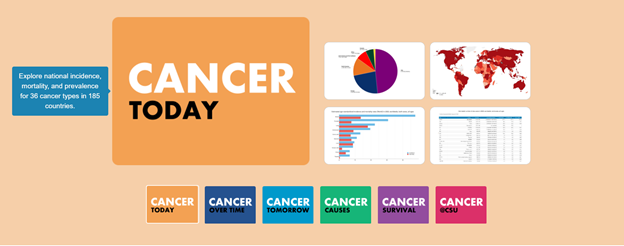
The Global Cancer Observatory (GCO) is an interactive web-based platform presenting global cancer statistics to inform cancer control and cancer research. The platform focuses on the visualization of cancer indicators using data from IARC’s (International Agency for Research on Cancer) Cancer Surveillance Branch, including GLOBOCAN, Cancer Incidence in Five Continents (CI5), International Incidence of Childhood Cancer (IICC), and several cancer survival benchmarking projects (SurvCan and SURVMARK).
The GCO is under continual development and the team will continually seek novel and informative ways of presenting global cancer data that link to IARC’s research activities.
IARC's Global Cancer Observatory
Cancer
What is cancer?
Cancer is a large group of diseases that can start in almost any organ or tissue of the body when abnormal cells grow uncontrollably, go beyond their usual boundaries to invade adjoining parts of the body and/or spread to other organs. The latter process is called metastasizing and is a major cause of death from cancer. A neoplasm and malignant tumour are other common names for cancer.
What are the most common types of cancer?
Lung, prostate, colorectal, stomach and liver cancer are the most common types of cancer in men, while breast, colorectal, lung, cervical and thyroid cancer are the most common among women.
What causes cancer?
Cancer arises from the transformation of normal cells into tumour cells in a multi-stage process that generally progresses from a pre-cancerous lesion to a malignant tumour. These changes are the result of the interaction between a person's genetic factors and three categories of external agents, including:
physical carcinogens, such as ultraviolet and ionizing radiation;
chemical carcinogens, such as asbestos, components of tobacco smoke, aflatoxin (a food contaminant), and arsenic (a drinking water contaminant); and
biological carcinogens, such as infections from certain viruses, bacteria, or parasites.
What are some of the risk factors for cancer?
Tobacco use, alcohol use, unhealthy diet, physical inactivity and air pollution are risk factors for cancer (and other noncommunicable diseases). Some chronic infections are risk factors for cancer. This is a particular issue in low- and middle-income countries. Approximately 13% of cancers diagnosed globally were attributed to carcinogenic infections, including Helicobacter pylori, human papillomavirus (HPV), hepatitis B virus, hepatitis C virus, and Epstein-Barr virus. Hepatitis B and C viruses and some types of HPV increase the risk for liver and cervical cancer, respectively. Infection with HIV substantially increases the risk of cancers such as cervical cancer.
How can we reduce the cancer burden?
Between 30% and 50% of cancers can currently be prevented by avoiding risk factors and implementing existing evidence-based prevention strategies.
The cancer burden can also be reduced through early detection of cancer and appropriate treatment and care of patients who develop cancer.
Many cancers have a high chance of cure if diagnosed early and treated appropriately.
How can we prevent cancer?
Cancer risk can be reduced by:
not using tobacco;
maintaining a healthy body weight;
eating a healthy diet, including fruit and vegetables;
doing physical activity on a regular basis;
avoiding harmful use of alcohol;
getting vaccinated against HPV and hepatitis B if you belong to a group for which vaccination is recommended;
avoiding ultraviolet radiation (which primarily results from exposure to the sun and artificial tanning devices);
ensuring safe and appropriate use of radiation in health care (for diagnostic and therapeutic purposes);
minimizing occupational exposure to ionizing radiation; and
reducing exposure to outdoor air pollution and indoor air pollution, including radon (a radioactive gas produced from the natural decay of uranium, which can accumulate in buildings — homes, schools and workplaces).
Early detection
Cancer deaths can be reduced if cases are detected and treated early. There are two components of early detection:
Early diagnosis
When identified early, cancer is more likely to respond to treatment and can result in a greater probability of survival and less morbidity, as well as less expensive treatment. Significant improvements can be made in the lives of cancer patients by detecting cancer early and avoiding delays in care.
Early diagnosis consists of three components:
being aware of the symptoms of different forms of cancer and of the importance of seeking medical advice if you are concerned;
access to clinical evaluation and diagnostic services; and
timely referral to treatment services.
Early diagnosis of symptomatic cancers is relevant in all settings and the majority of cancers. Cancer programmes should be designed to reduce delays in, and barriers to, diagnosis, treatment and care.
Screening
Screening aims to identify individuals with findings suggestive of a specific cancer or pre-cancer before they have developed symptoms. When abnormalities are identified during screening, further tests to establish (or not) a diagnosis should follow, as should referral for treatment if needed.
Screening programmes are effective for some but not all cancer types and in general are far more complex and resource-intensive than early diagnosis as they require special equipment and dedicated personnel.
Patient selection for screening programmes is based on age and risk factors to avoid excessive false positive studies. Examples of screening methods are:
HPV testing for cervical cancer;
the PAP cytology test for cervical cancer;
visual inspection with acetic acid (VIA) for cervical cancer; and
mammography screening for breast cancer in settings with strong or relatively strong health systems.
Quality assurance is required for both screening and early diagnosis programmes.
Treatment
A correct cancer diagnosis is essential for appropriate and effective treatment because every cancer type requires a specific treatment regimen. Treatment usually includes radiotherapy, chemotherapy and/or surgery. Determining the goals of treatment is an important first step. The primary goal is generally to cure cancer or to considerably prolong life. Improving the patient's quality of life is also an important goal. This can be achieved by support for the patient’s physical, psychosocial and spiritual well-being and palliative care in terminal stages of cancer.
Some of the most common cancer types, such as breast cancer, cervical cancer, oral cancer and colorectal cancer, have high cure rates when detected early and treated according to best practices. Some cancer types, such as testicular seminoma and different types of leukaemia and lymphoma in children, also have high cure rates if appropriate treatment is provided, even when cancerous cells are present in other areas of the body.
Palliative care
Palliative care is treatment to relieve, rather than cure, symptoms caused by cancer and to improve the quality of life of patients and their families. Palliative care can help people live more comfortably. It is particularly needed in places with a high proportion of patients in advanced stages of cancer where there is little chance of cure.
Relief from physical, psychosocial and spiritual problems through palliative care is possible for more than 90% of patients with advanced stages of cancer. Effective public health strategies, comprising community- and home-based care, are essential to provide pain relief and palliative care for patients and their families. Improved access to oral morphine is strongly recommended for the treatment of moderate to severe cancer pain, suffered by over 80% of people with cancer in the terminal phase.








